

What did Nikon Do Right with the Coolpix P7800?
by Richard Rivera
The other day I was once again astounded by the degree of detail and dynamic range in a 13 x 19 inch print shot with the Nikon Coolpix P7800. And while 13x19” is not a huge print size, it can certainly give you a clear indication as to image quality, and what distinguishes the Coolpix P7800.
Some may think of the Nikon Coolpix P7800 as a niche camera within a niche. It is a compact (within the dying breed of compact cameras) that is not compact enough to fit in your jeans like a Sony RX100m2 (unless you have cargo pants), and its autofocus is not super fast for capturing action (although it does have a 6 frame burst). What it does have is an excellent, very sharp lens and the ability to produce RAW files. It delivers surprisingly excellent results in large prints. The Nikon Coolpix P7800 is the camera you carry when you don’t want to carry a camera, but still desire high image quality.
LENS
The Nikon P7800 has a 1/1.7-inch type CMOS 12.2MP sensor and is equipped with a zoom lens equivalent (35mm) in range to a 28-200mm. In actual optics, the lens zooms from 6mm at f/2, to 42.8mm at f/4. I found the 7.1x optical zoom range from wide-angle to telephoto to be extremely useful, and the f/2 aperture at the wide and macro range is also a real bonus, but more on that later.
FEATURES
It also has several outstanding features that set it apart from other compacts such as ED (extra-low dispersion) glass elements in the lens, an actual dial for +/- 3 stop exposure compensation, ISO 80-6400, a fully articulated swivel-tilt high-resolution (921,000 dot) 6 level brightness adjustment LCD, two programmable function (Fn) buttons, a built-in EVF (electronic viewfinder) instead of an optical viewfinder, a histogram, “silent” zoom control for video, an intervalometer (time-lapse movies), a burst mode of six shots at 4fps (frames-per-second), a perfect grip for its size, a front (Command) dial for aperture control, a rear dial for shutter speed adjustments, 3-stop neutral-density filter, 3 custom User Settings (U1, U2, U3), and lots more.
After two years without a “real” successor, the Coolpix P7800 remains a good solid compact that although hampered by its price and response time does deliver where it counts: in image quality. This is not the camera for shooting action, sports, wildlife, young children, or anything that moves quickly. The AF is too slow for that, although Nikon does include a burst mode (when the camera is set to Continuous M) that shoots 6 continuous shots at a rate of 4 fps, in either RAW or JPG, but it then immediately requires about 20 seconds to process the information.
IMAGE QUALITY
Personally, I was interested in a compact camera with a moderate to long zoom that could generate RAW files and shoot handheld at very slow speeds. There is a difference between the JPG and RAW output on the P7800, noticeable for the most part in the dynamic range, but it is not as great a difference as you would expect. RAW files from this camera have enough fine detail that will easily produce excellent prints up to 15 x 20 inches with surprising sharpness, and dynamic range.
My tests were shot at ISO 80 and 200, at all the apertures. Interestingly enough, the best performance was at the widest apertures, for both the wide angle and telephoto focal lengths. For instance at the wide-angle equivalent of 28mm, f/2 resulted in the sharpest images; and at the telephoto equivalent of 200mm, f/4 remained the sharpest. Although the other aperture settings gave good results the absolute sharpest images were wide open. My guess is that with such a tiny sensor and minuscule apertures the effects of diffraction set in fairly quickly.
I also shot at ISO 400, 640 and 800. At ISO 400 the images remained excellent but could be improved with just a slight amount of noise reduction. At ISO 800 the resulting grain “noise” reminded me of Kodak Tri-X with an insistent yet appealing texture throughout.
Overall, I was very pleased with the results from the Coolpix P7800. The optical quality of the lens does not disappoint. It is very sharp even into the corners of the frame. And judging from the many downloadable samples available online for the Sony RX100m2 and the Canon Gx7 (both as JPG and RAW samples) the P7800 lens appears sharper than those, even with the consideration of their larger sensors.
In the red outlined detail of the scene below which has been enlarged to 100%, especially the railing at left, you can see the remarkable ability of the lens to resolve fine detail. The shot below has not been sharpened or altered in any way.
HANDLING
The Coolpix P7800 is chunky, 2 inches deep and 4.5 inches wide. It is one of those cameras that if held to the eye requires a minimal amount of fuss because all of the rear controls are raised and can be found by tactile feel. The front and rear dials are perfectly positioned, probably better for medium and small-sized hands than large.
The +/- 3 stop Exp. Comp. dial is a bit stiff but having it on deck and so easily accessible is a huge advantage. Autofocus was accurate although not speedy.
FUNCTION BUTTONS
The two Fn buttons although useful may be a bit awkward to use depending on their programmed functions. I programmed the Fn2 (top deck, corner) for the histogram, and the front Fn1, near the lens mount, for changing ISO. I found the Fn2 (histogram) very useful to turn on-or-off at a touch, but used Fn1 (ISO) less frequently due to its purpose (meaning that I do not change ISO often) and the contortions required to press the button while also turning the dial. The Function buttons can be programmed with a variety of functions and dial combinations too numerous to list.
LCD & Electronic Viewfinder (EVF)
The high-resolution, detailed, fully articulated tilt/swivel LCD is a priceless feature for very low-angle or overhead high-angle shooting, and very practical for a camera of this weight and size. And when bright daylight makes it difficult to see the LCD, the Nikon P7800 has an actual EVF. It was one of the most pleasant surprises in using this camera. Having used the Canon G9, Canon G12, others with a small optical view-finders, or none at all like Panasonic’s compacts, this electronic viewfinder is a very useful addition.
The EVF is not ultra high resolution at 921,600 dots (far less than the usual 1.4 mil dots), but it provides lots of on-screen exposure information (i.e., +/- exposure compensation, aperture, shutter speed, metering type, AE mode, ISO, shots remaining, image-stabilization, Active D-Lighting, battery status, and even a histogram) that is easily seen in bright daylight unlike most LCDs that will leave you squinting for information. A tiny button near the EVF switches the display from EVF to LCD, and vice versa.
All of the dials are nicely positioned and easy to use except for the +/- Exposure Compensation click-stop-dial at the right corner of the top, which is a bit stiff but certainly will not slip by accident. There is even a tiny indicator light to call attention to +/- activation.
HISTOGRAM
The histogram could be larger but given the constraints of screen size and the sheer amount of information displayed, it is accurate and beneficial.
MACRO
There are two settings for close-ups. At the closest Macro Close-up (wide-angle) setting it focuses approximately 1/2 inch (1 cm) from the front lens element. With the aperture set to f/2, the macro shots achieve a lovely bokeh. You can see the difference in these two images one at f/2 (top), the other below at f/4 (bottom).
CONCLUSION
The Nikon Coolpix P7800 is one of those cameras that unless you are normally inclined towards Nikon products has a difficult time finding an audience. It is too bulky to fit into jeans or a ladies pocketbook or be thought of as a slim-bodied compact. Its sensor is so small that one easily but mistakenly assumes it to be inferior, and although its autofocus is accurate it is not speedy. It is a niche camera that while defying easy classification performs really well for those putting a premium on quality optics and RAW files, while also keeping weight down for those occasions when you do not want to carry a camera. It is a conundrum. But as I mentioned at the start it is perfect for certain uses, one of them being wide aperture close-up photography, a 28-200mm range, and very low-angle or high-angle overhead shots.
I think the image quality speaks for itself.
* * *
PLUSES
*excellent grip for a camera of this size and weight
*Excellent high-res great color and detail LCD
*EVF as useful alternative to LCD
*sharpness and contrast adjustments in camera for JPGs
*excellent dynamic range in RAW post-processing
*three stop ND filter
*handhold-able speed down to 1/4 sec. no shutter vibration
MINUSES
-Pressing the Function buttons while turn other dials is awkward.
-slow if shooting RAW and JPGs (about 2 seconds between shots)
-NO histogram in Playback mode
-NO EXIF data displayed in playback
-NO wi-fi (but EYE-FI cards compatible)
SPECS
12.2MP
1/1.7in. CMOS sensor
7.1x optical zoom (35mm equivalent 28-200mm)
f/2-4
13 elements in 10 groups (2 ED lens elements)
contrast-detect AF
921,000-dots LCD
ISO 80-6400
June 16, 2015
Your feedback and comments are appreciated. See Contact page for e-mail.

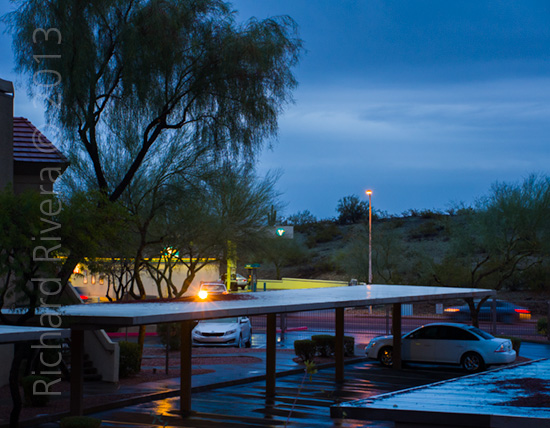

Gas Station at Dawn (2014), in full is seen above with a 100% detail from the same image. Shot at f/3.2@ 1/6 sec. ISO 200 handheld.
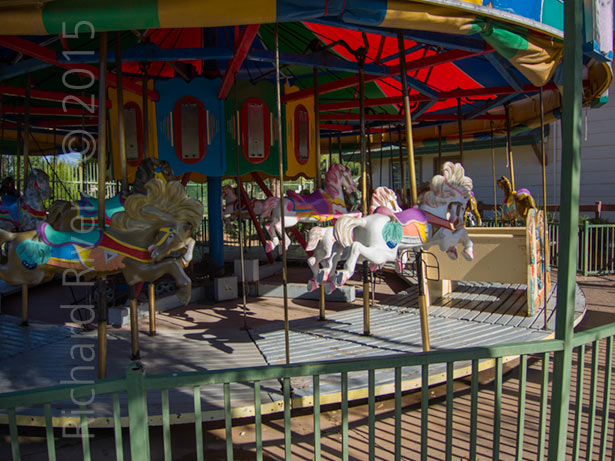
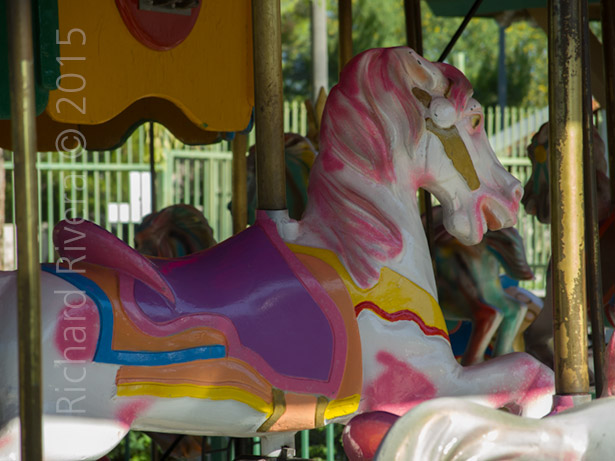
ZOOM RANGE Carousel Fantasy (2015). Two separate shots, one at 28mm (equiv.), and second image (bottom) shot at 200mm from same position to illustrate the zoom range. Exposure: f/2 @ 1/2000 sec. ISO 80. Shot was processed in Adobe Camera Raw for lightening shadows. No sharpening or noise reduction applied.
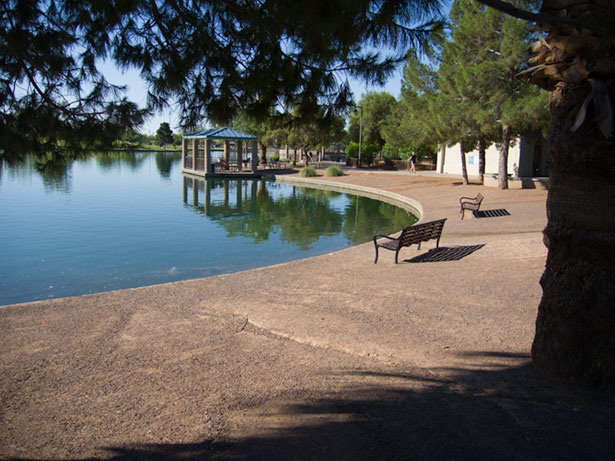
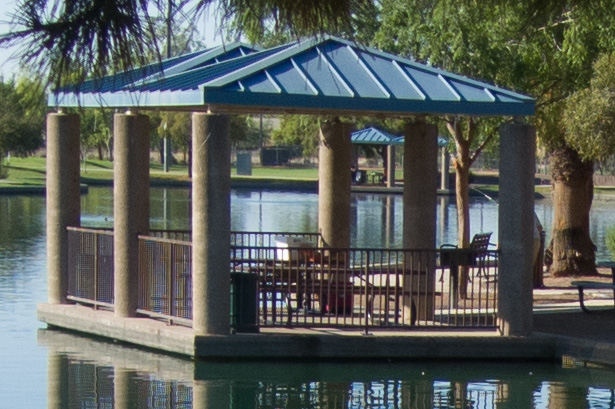

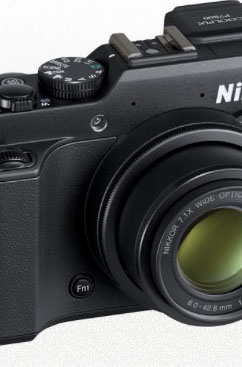





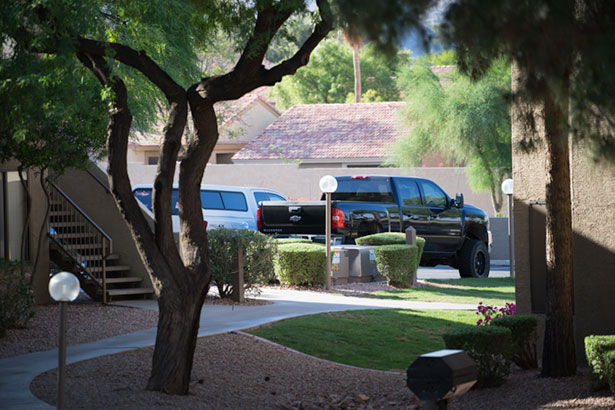
Three 100% center crops (above) of the full scene shown. Full scene was framed to the same width for consistency.
The three images were cropped from three different cameras: Olympus OM-D E-M1, f/7.1@1/50sec ISO 100 (at left); Nikon Coolpix P7800, f/4 @1/100sec ISO 80 (center); and the full-frame Sony a7II, f/5.6 @ 1/125 ISO 100 (at right). No sharpening or noise reduction was applied. Adobe Camera Raw settings were at defaults.
Copyright © 2015 Richard Rivera & Rivera Arts Enterprises All rights reserved. No copying or reproduction of any kind without express written permission from Richard Rivera
Legal Disclosure Camera Sense and Eagles of New York are trademarks of Elk Partners LLC